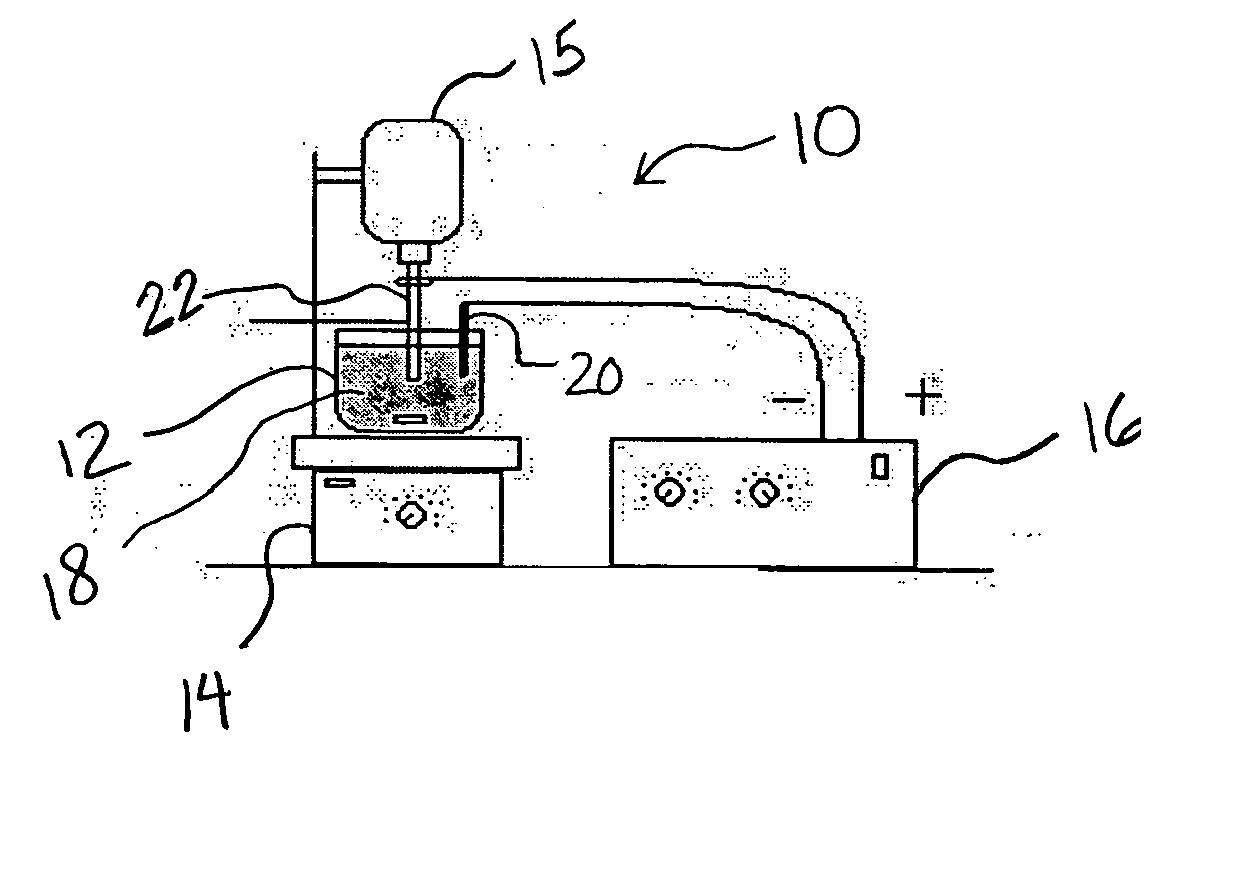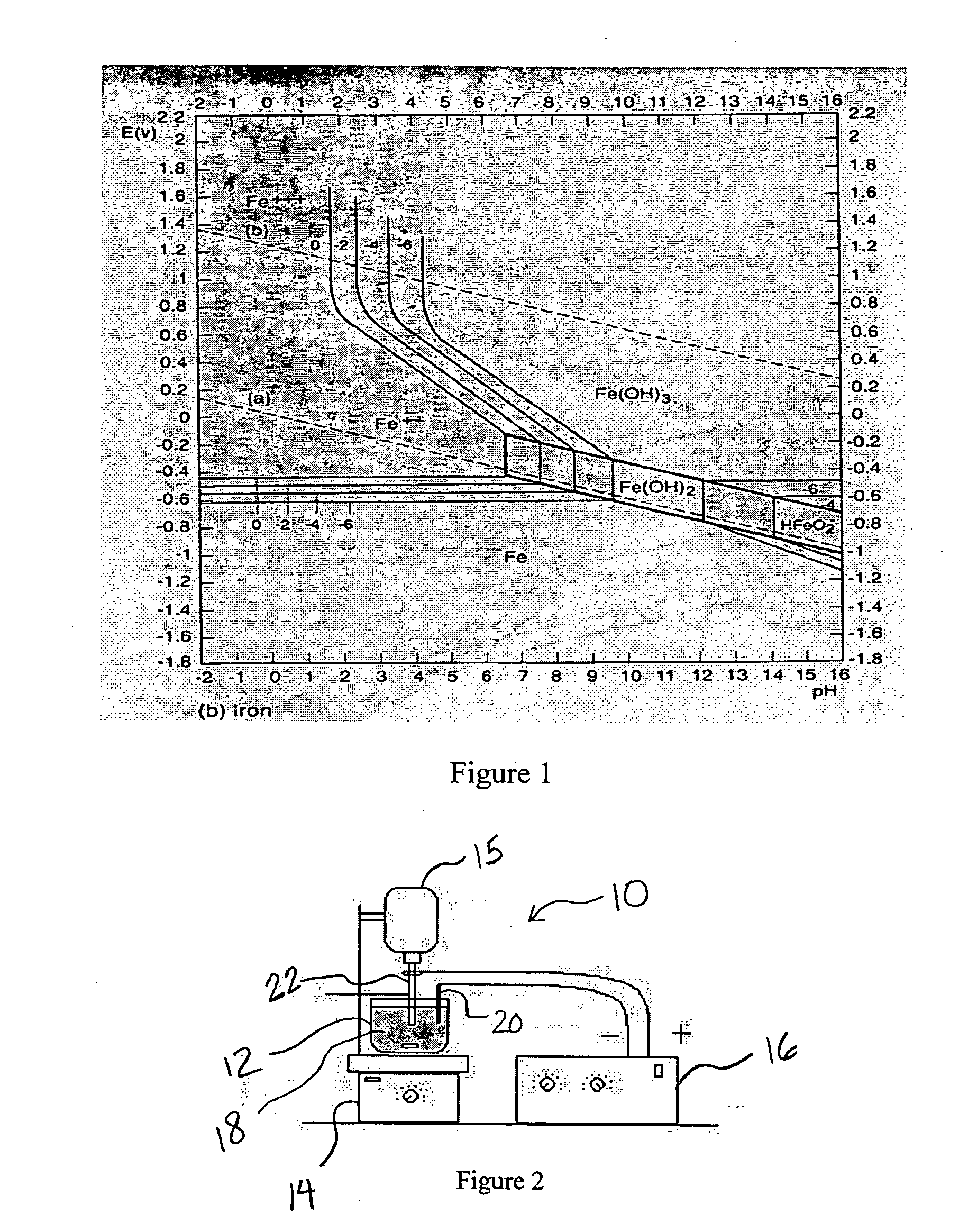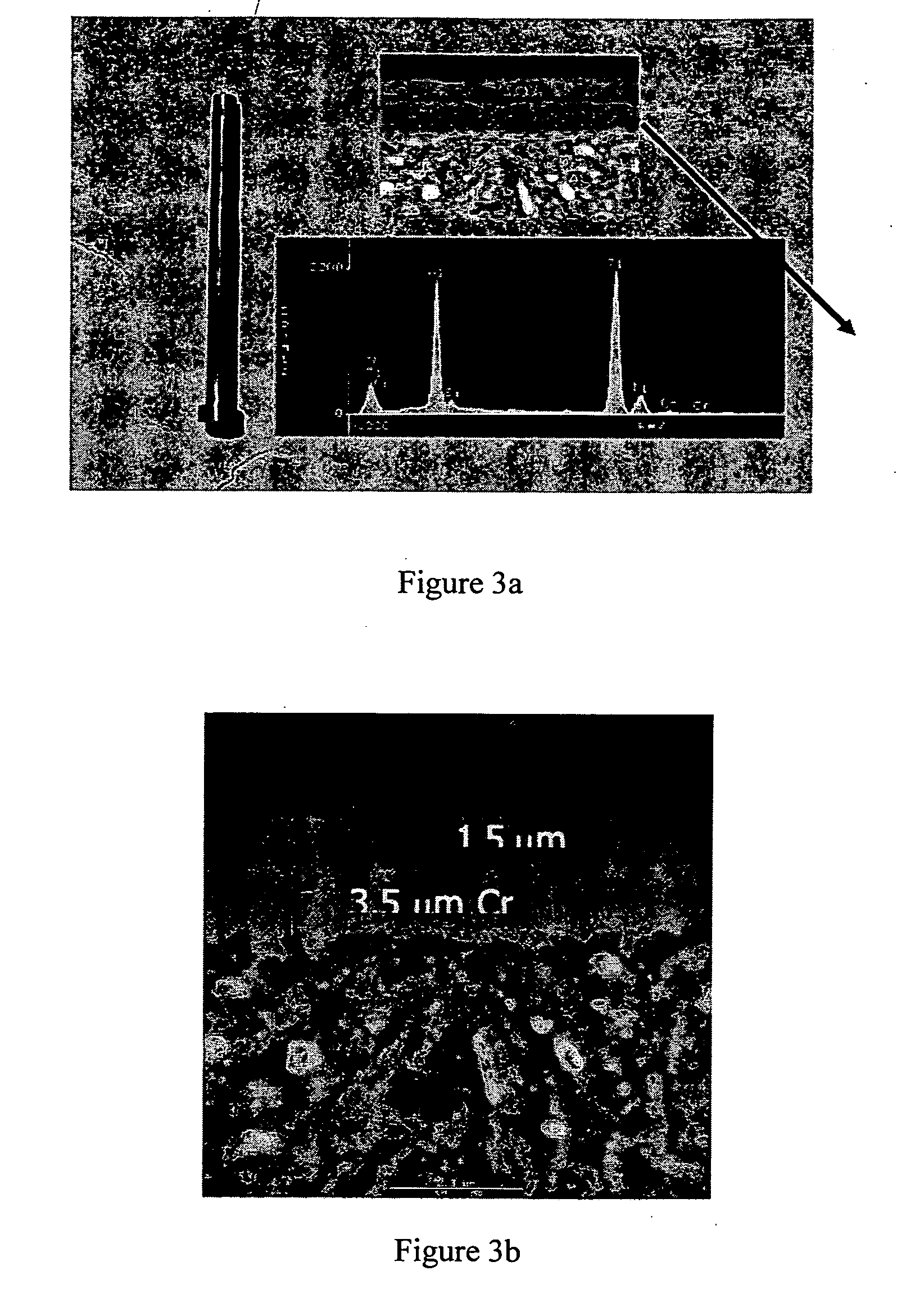Electrochemical removal of die coatings
a technology of electrochemical removal and die coating, which is applied in the direction of electrolysis components, printed circuit manufacturing, manufacturing tools, etc., can solve the problems of large tooling cost, failure locally, and loss at the end of service life, and achieve the effect of reducing the cost of frequent discarding and replacement of used substrates
- Summary
- Abstract
- Description
- Claims
- Application Information
AI Technical Summary
Benefits of technology
Problems solved by technology
Method used
Image
Examples
example 1
TiAlN Coatings
[0047] A coating of 1.5 mm of graded TiN / TiAlN over 3.5 mm e-Cr (as shown in FIGS. 3a 3b) was dissolved in both an aqua-regia and a sodium hydroxide electrolyte solution. FIG. 4 shows the sample after exposure to aqua-regia (3:1 HCl—HNO3) for 2 hours at 50° C. The figure shows that the coating was been severely attacked and local pitting caused dissolution of the substrate. The acid concentration was decreased to 50% and further to 10%. The test temperature was lowered to 30° C. The diluted acid still pitted the substrate at lower temperatures as shown in FIGS. 5a-5b. FIGS. 5a-5b depict a magnified image of core pins following exposure to HCl—HNO3; (a) 50% acid after 1 hour and, (b) 10% acid after 2 hours.
[0048] The electrolytic solution was changed to 0.1 M sodium hydroxide and chemical dissolution was conducted for various lengths of time at different temperatures. In each trial, the electrolyte solution was stirred and the samples were rotated. FIG. 6a shows the o...
example 2
CrC Coatings
[0049] A coating of approximately 7.5 mm of chromium carbide on a drill bit is shown in FIG. 7. For the removal of chromium carbide, a basic solution of 0.1 M NaOH was used as the electrolyte and a temperature of 80° C. was used under the same configuration of electrode stirring described in Example 1. Platinum wire was used as the cathode and the coated drill bit served as the anode. FIG. 8 shows the drill bit after complete removal of coating. To further optimize the removal process, the electrolyte temperature was dropped to 50° C. and further to about 25° C. (ambient temperature). It was found that the coating could be removed in a time between about 5 minutes to about 90 minutes duration depending on the temperature. FIG. 9 shows the clean surface prepared at room temperature. The surface profile shows that the substrate had not been affected. FIG. 10 indicates that the cutting edge of the drill bit was still sharp. No evidence of local attack or pitting was seen o...
PUM
| Property | Measurement | Unit |
|---|---|---|
| temperature | aaaaa | aaaaa |
| temperature | aaaaa | aaaaa |
| temperature | aaaaa | aaaaa |
Abstract
Description
Claims
Application Information
 Login to View More
Login to View More - R&D
- Intellectual Property
- Life Sciences
- Materials
- Tech Scout
- Unparalleled Data Quality
- Higher Quality Content
- 60% Fewer Hallucinations
Browse by: Latest US Patents, China's latest patents, Technical Efficacy Thesaurus, Application Domain, Technology Topic, Popular Technical Reports.
© 2025 PatSnap. All rights reserved.Legal|Privacy policy|Modern Slavery Act Transparency Statement|Sitemap|About US| Contact US: help@patsnap.com



